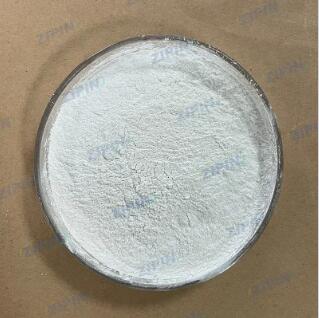Exploring the Sources of Curdlan Production: Nature's Versatile Polysaccharide
2024-03-18
In the realm of polysaccharides, few compounds offer the versatility and potential of Curdlan. This unique polysaccharide, renowned for its gelation properties and biocompatibility, holds a prominent place in various industries, from food to pharmaceuticals. But where does Curdlan come from, and how is it produced? Let's embark on a journey to uncover the sources of Curdlan production and explore the fascinating world of this natural wonder.
What is Curdlan?
Curdlan is a linear β-1,3-glucan polysaccharide composed of repeating units of glucose molecules linked together in a specific arrangement. Its distinctive helical structure gives it remarkable properties that make it suitable for a wide range of applications.
Sources of Curdlan Production
Curdlan can be produced from both natural and microbial sources. Here are the primary sources of Curdlan production:
1. Algae and Plants: Some algae and plants naturally produce small amounts of Curdlan as part of their cell wall structure. However, the extraction of Curdlan from these sources is often challenging and not economically viable on a large scale.
2. Microbial Fermentation: The most common and commercially viable method of Curdlan production involves microbial fermentation. Certain bacteria, particularly strains of Agrobacterium, Alcaligenes, and Rhizobium, have the ability to synthesize Curdlan as an extracellular polysaccharide.
- Agrobacterium spp.: Species of Agrobacterium, such as Agrobacterium sp. ATCC 31749, are widely used for industrial-scale production of Curdlan. These bacteria ferment readily available carbohydrates, such as glucose or sucrose, to produce Curdlan as a byproduct.
- Alcaligenes faecalis: Another microorganism utilized for Curdlan production is Alcaligenes faecalis. This bacterium is known for its efficient synthesis of Curdlan under controlled fermentation conditions.
Production Process
The production of Curdlan via microbial fermentation typically involves the following steps:
1. Inoculum Preparation: A culture of Curdlan-producing microorganisms is prepared and grown under optimal conditions to achieve a high cell density.
2. Fermentation: The inoculum is then transferred to a larger fermentation vessel containing a nutrient-rich medium supplemented with carbohydrates. The microorganisms utilize the carbohydrates as a carbon source to produce Curdlan, which is excreted into the fermentation broth.
3. Harvesting: Once the fermentation is complete, the Curdlan-containing broth is harvested from the fermentation vessel. The broth may undergo further processing steps, such as filtration or centrifugation, to separate the Curdlan from the microbial cells and other impurities.
4. Purification: The extracted Curdlan undergoes purification steps to remove any remaining contaminants and achieve the desired purity level. This may involve techniques such as precipitation, chromatography, or solvent extraction.
5. Drying: Finally, the purified Curdlan is dried to form a powdered or granulated product suitable for various applications.
Conclusion
Curdlan's production from microbial fermentation offers a sustainable and scalable approach to harnessing the potential of this remarkable polysaccharide. With advances in biotechnology and fermentation technology, the production process continues to be optimized for efficiency and yield. As demand for natural and functional ingredients grows, Curdlan's role in shaping the future of diverse industries remains as promising as ever.


